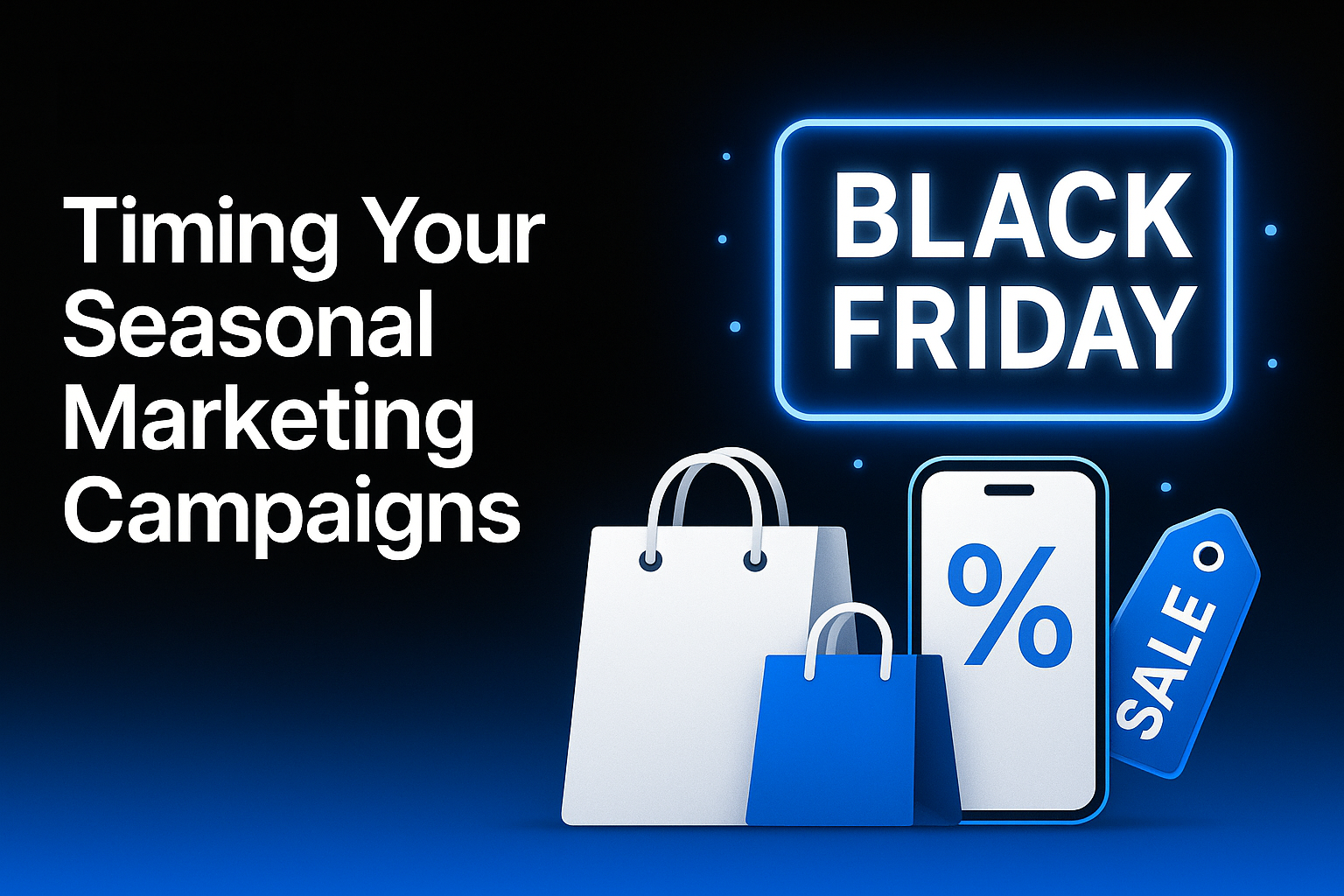Seasonal E-commerce Success: The Ultimate Timing Guide for Marketing Campaigns
Seasonal events represent significant shopping opportunities for e-commerce businesses, with consumers spending billions on food, gifts, decorations, and clothing throughout the year for occasions like Valentine's Day, Easter, Halloween, Black Friday, Christmas, and more.
However, timing is everything when it comes to seasonal marketing. Launch too early, and your customers might not be in the shopping mindset yet. Wait too long, and you'll miss the prime shopping window.

The Optimal Timing for Seasonal Marketing Campaigns
Based on comprehensive market research and consumer behavior analysis, here's the ideal timeline for your seasonal e-commerce marketing efforts:
10-14 Days Before the Event
- Website Branding and Design: Apply seasonal elements to your website and product pages
- Special Collections: Feature your seasonal product collections prominently
- SEO Optimization: Ensure all seasonal content is fully optimized
10-20 Days Before the Event
- Ad Campaign Launch: Begin your paid advertising campaigns across platforms
- Social Media Ramp-Up: Increase frequency of seasonally-themed posts
- Influencer Partnerships: Activate influencer collaborations for maximum visibility
5-10 Days Before the Event
- Email Marketing Push: Send targeted seasonal promotional emails
- Loyalty Program Offers: Provide special seasonal incentives to loyal customers
- Free Shipping Promotions: Consider offering free or expedited shipping as the event approaches
3-5 Days Before the Event
- Last-Minute Deals: Launch limited-time offers for procrastinating shoppers
- Urgency Messaging: Update ad copy and website banners with shipping cutoffs
- Re-targeting Campaigns: Focus efforts on cart abandoners and previous site visitors
Why This Timeline Works
Research shows the majority of seasonal shopping happens within two weeks of the event, with spending intensity increasing as the date approaches. The 10-14 day window strikes the perfect balance between:
- Capturing early planners who begin shopping about two weeks before
- Engaging impulse buyers who make decisions within days of the event
- Providing sufficient delivery time for online purchases to arrive before the occasion
Seasonal Marketing Strategy Elements
Beyond timing, a successful seasonal marketing campaign should include:
Product Bundling
Create themed bundles that solve customer needs, such as complete gift packages or seasonal preparation kits.
Limited Edition Products
Introduce exclusive seasonal products or packaging to create urgency and collectibility.
Cross-Selling Opportunities
Strategically recommend complementary seasonal products throughout the customer journey.
Mobile Optimization
Ensure your seasonal promotions are fully optimized for mobile shoppers, who account for nearly 60% of seasonal purchases.
Post-Event Strategy
Plan for post-event clearance sales to maintain momentum and clear seasonal inventory.
Case Study: Success by the Numbers
Retailers who followed this precise seasonal marketing timeline saw:
- 34% higher conversion rates on seasonally-themed landing pages
- 27% increase in average order value during the 10-day pre-event period
- 42% growth in email marketing ROI compared to non-optimized campaigns
Conclusion
Seasonal shopping periods provide lucrative opportunities for e-commerce businesses throughout the year. By following this research-backed timeline—initiating website changes and ad campaigns 10-14 days before a seasonal event, email marketing 5-10 days prior, and last-minute promotions in the final 3-5 days—you can maximize both sales and customer satisfaction during these important retail periods.
Start planning your seasonal marketing strategy now to ensure you're fully prepared to implement this optimal timing approach for upcoming shopping events like Valentine's Day, Easter, Halloween, Black Friday, Christmas, and more.
To learn more about setting up seasonal marketing campaigns in Taptool, visit our Campaigns Configuration Guide.
